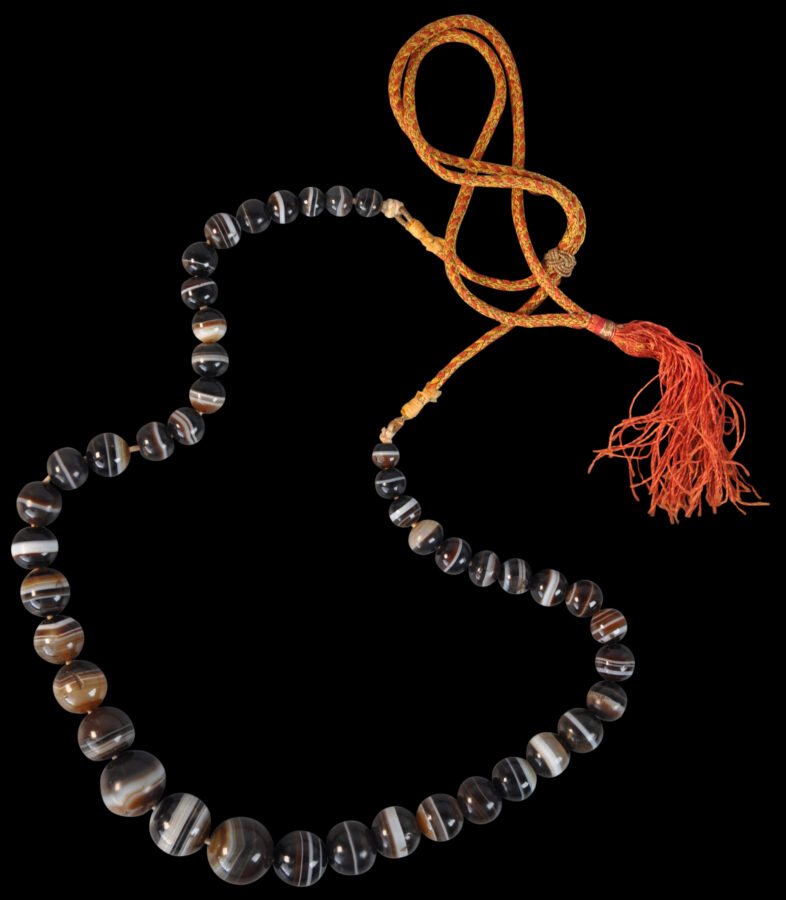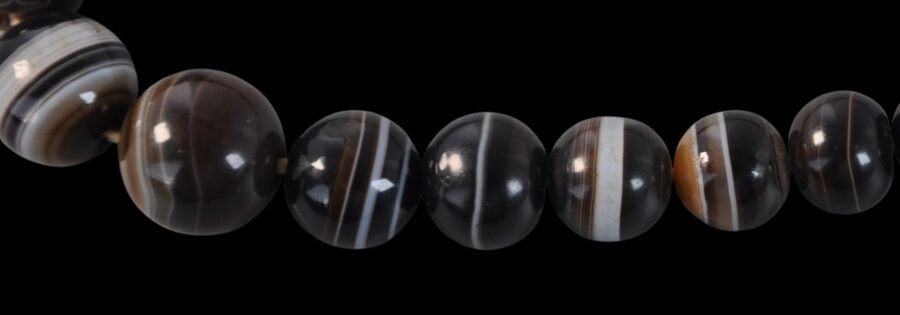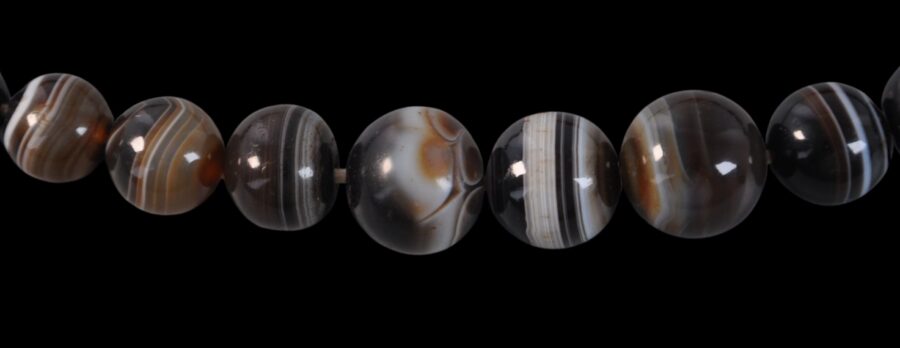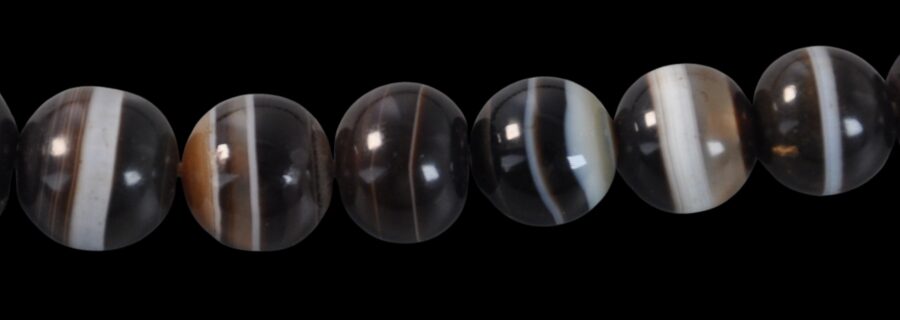Enquiry about object: 9818
North Indian Banded Agate or Onyx Muslim Rosary Bead Strand (Subhah)
Khambat (Cambay), Gujarat, India Ancient
length of beaded segment: 40.3cm, maximum circumference: 90cm, diameter of the largest bead: 1.6cm, weight: 64g
Provenance
private collection, Canada. The collection was carefully assembled over the last 50 years.
This string of 44 graduated beads have been hand-carved and polished from onyx, a type of banded agate (doradar akik) also known as bullseye agate or Sulemani agate. The beads are likely to be ancient but are on later stringing.
Beads such as these were used as rosary beads by Indian Muslims in the 19th century and possibly before. In India, a full stand of prayer beads was referred to as a subhah. In Persian it is a tasbih.
Such beads were produced along with other types of agate beads in Khambat (Cambay) in Gujarat which emerged as a major bead-making and polishing centre. Indeed, from the earliest times, Gujarat was the main source of onyx and agates in India, which for millennia was found along the banks of the Narmada River. Shortly after the 12th century Muslims gained control of the lapidary industry in Western India.
Old examples of Indian subhah beads are rare.
A similar strand in London’s Victoria & Albert Museum is illustrated in Barnard (2008, p. 37). That strand was collected before 1867 and probably dates to much earlier – these beads have been known in this form since the 12th century.
The strand here is in excellent condition.
References
Barnard, N., Indian Jewellery, V&A Publishing, 2008.
Francis, P., ‘Beads of the early Islamic period’ in Beads: Journal of the Society of Bead Researchers, Vol 1, 1989.
Untracht, O., Traditional Jewelry of India, Thames & Hudson, 1997.






